The capital of the Czech Republic, Prague, is located in the very center of Europe. It is a true open-air museum of medieval architecture with a wealth of centuries-old history, delicious dishes, safe streets and friendly locals.
We visited the city in the summer, the most wonderful time for long walks, sightseeing, enjoying gardens and parks.
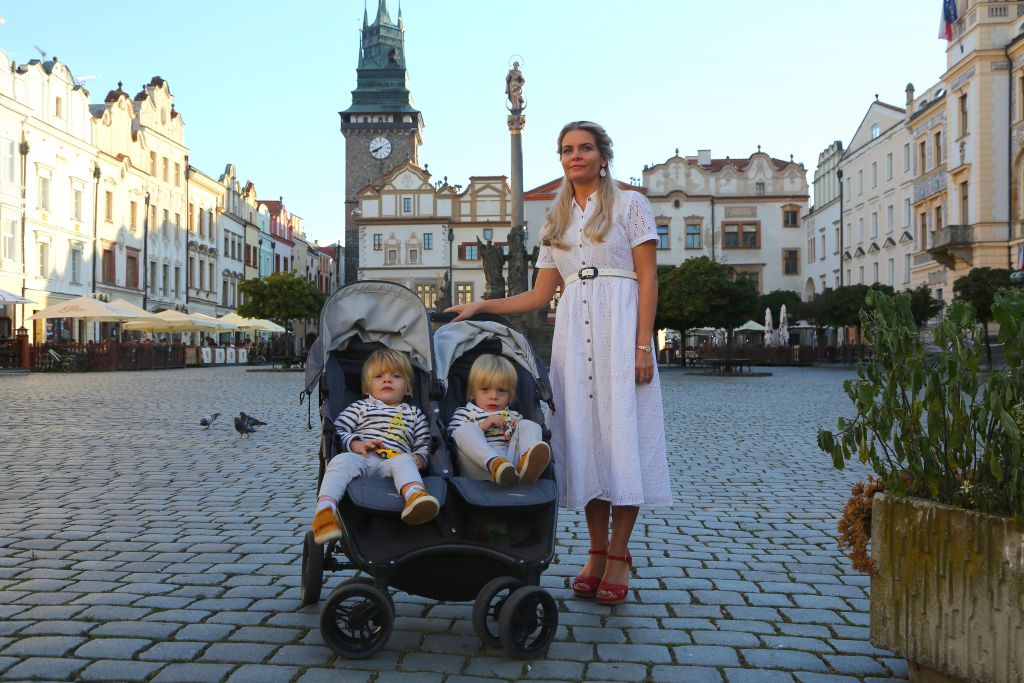
The History of the City
Prague is considered the heart of Europe. It also has a long history that goes back 11 centuries.
The first mention of Prague is dated to the 9th century, and its foundation is believed to have started with the construction of the wooden Prague Castle on the left bank of the Vltava River.
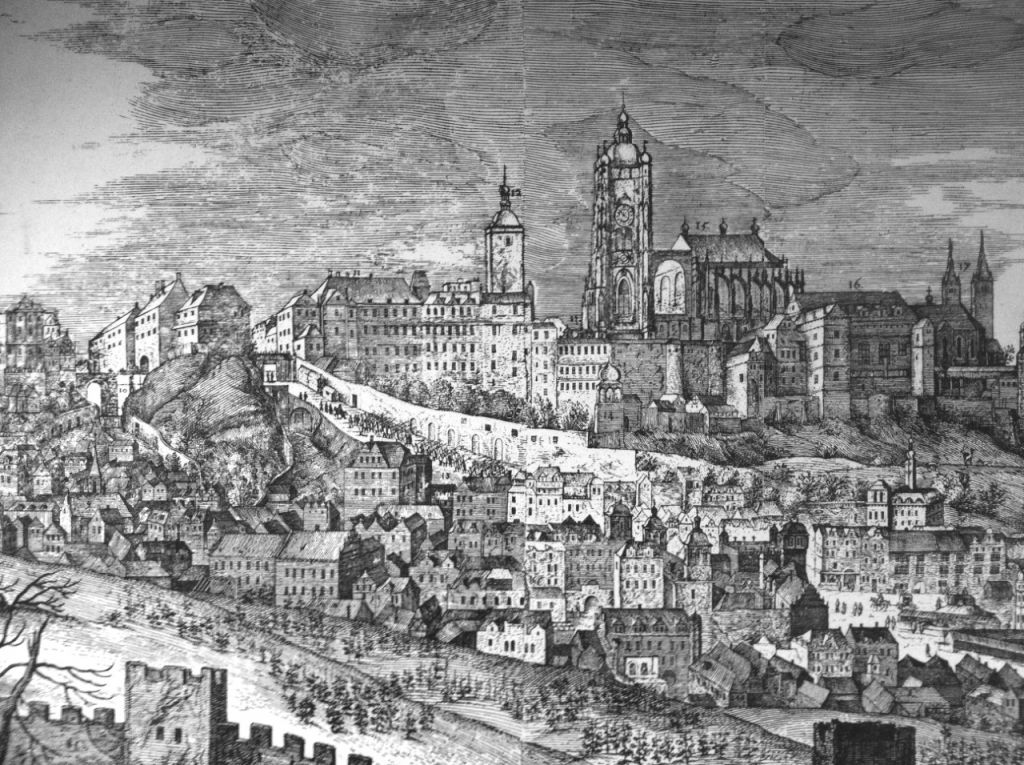
Prague soon became the center of the nascent Czech state. In the 14th century, the city experienced significant prosperity, and its area greatly expanded.
Meanwhile, King Charles IV founded the university which is now considered one of the oldest classical universities in the world. Moreover, he commanded to build a stone bridge named after him as well.
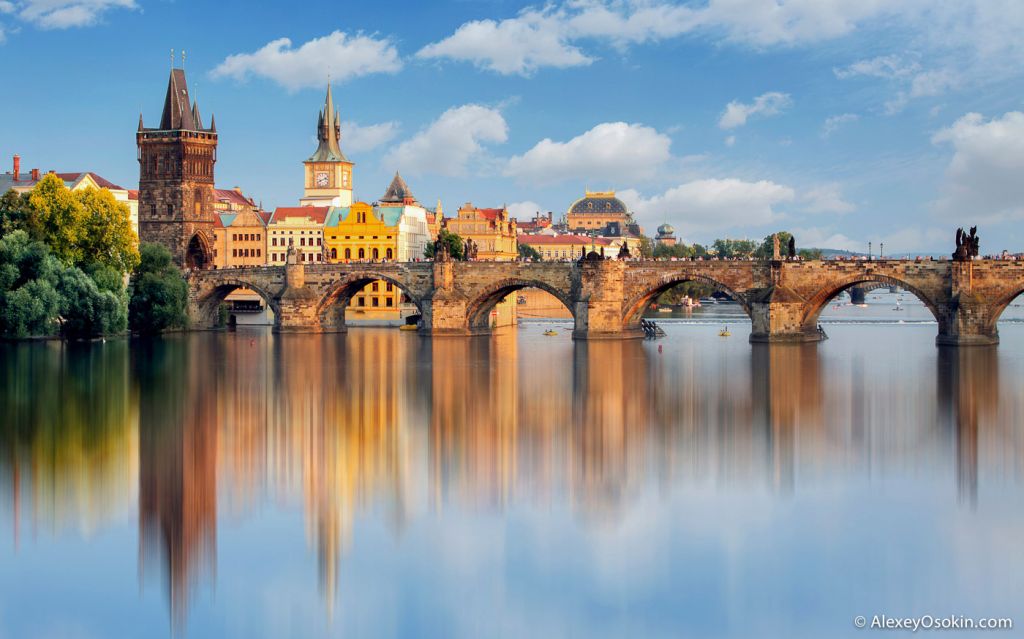
King Rudolf II also played a major role in the history of the Czech Republic and Prague in particular. He strongly supported the development of the arts and sciences such as astronomy, astrology, and alchemy that was then popular.
By the 18th century, the area of modern Prague included several smaller towns: the Old Town, the New Town, Malá Strana, Hradčany and some others. Nowadays, these names are the names of the historic districts of the city.
These small towns joined each other in 1874 – and Prague continued to develop: wide streets, avenues, new buildings in the Romanticism style began to emerge.
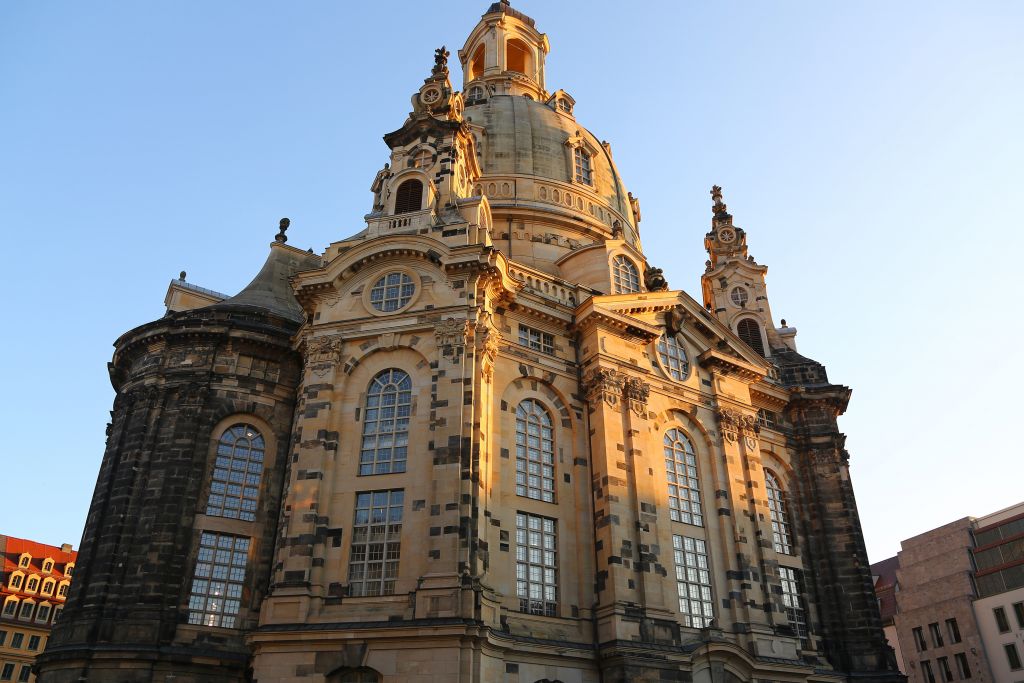
In 1918, Prague became the capital of the new state of Czechoslovakia, and in 1993, the city became the capital of the Czech Republic.
The historical heritage of Prague has been preserved very well to this day; even the Second World War was not able to destroy its cultural assets. There is a plausible theory that the Nazis did not bomb Prague since Hitler was going to establish one of his residences in the city after the victory of the Third Reich.
Today, the city is considered the visitor and cultural center of the country. Millions of tourists (an average of more than 2 million per year!) come from around the world to learn about its history and see its exciting sights.
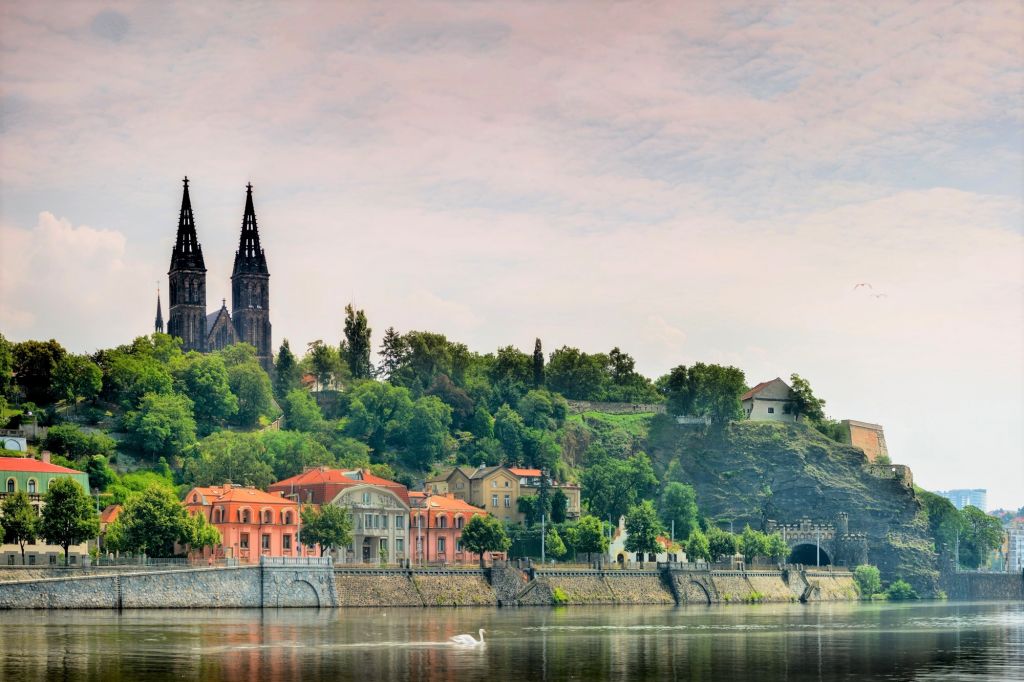
Our Area of Residence
We decided to take a train to move from Budapest to Prague, as the trip takes just a few hours.
For Michael and Robert, this was the second train trip ever. We took all their favorite toys so they wouldn’t get bored while on the go.
In Prague, we settled in the historic district of Vinohrady and were very happy with the place we had chosen: it was full of green parks and beautiful buildings.
Even though we lived quite close to the city center, there was a peaceful and calm environment there – neither numerous tourists on the streets nor rattling transport disturbed us.
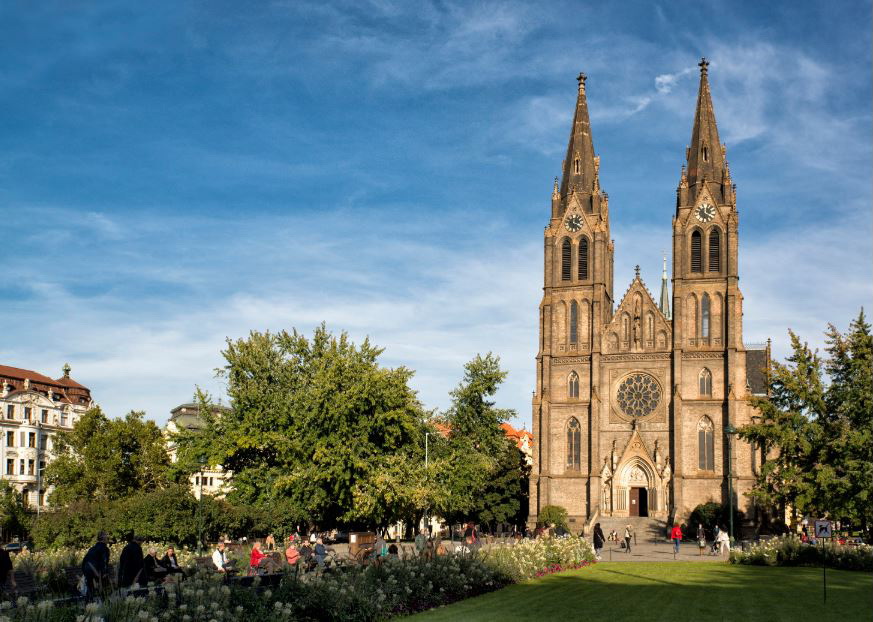
Our apartment was also cozy and comfortable. Shortly before we arrived, the housing boom began in Prague, and the cost of real estate has grown dramatically in recent years – it cost one and a half times more to rent an apartment in Prague than in Budapest.
The Abundance of Tourists
We came to Prague in late June, the time of the greatest inflow of tourists. We met most of them, of course, in the city center. The entire center of the city is very tourist-oriented and consequently prices there are much higher than in other parts of the city.
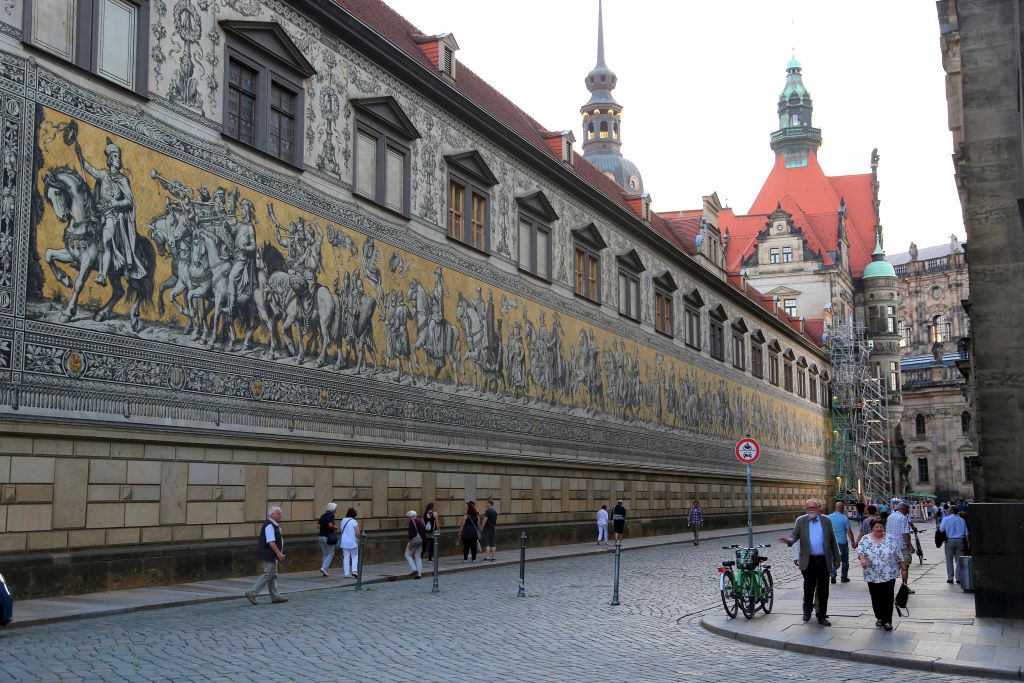
Public Transport
As for transport infrastructure, Prague has both buses and trams. Metro and cable car services are also available.
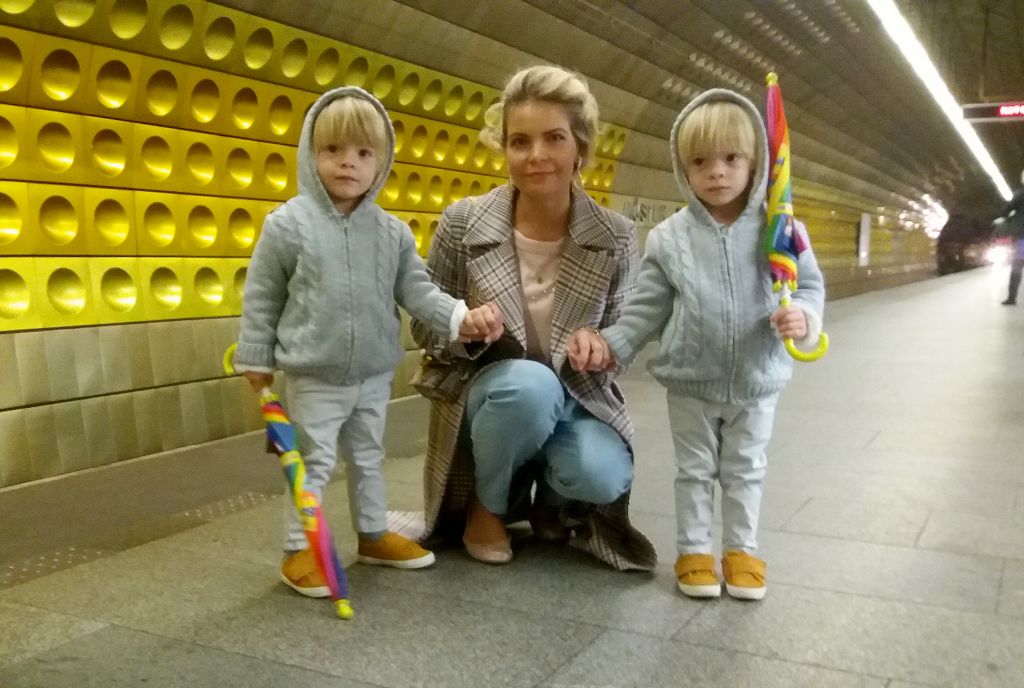
People also use water transport, although locals rarely take it. But for us, this was another way to take a look at the city’s beauty from different angles.
The only drawback was that many trams in Prague were quite old. When walking with the twins, we used a double stroller, and it was impossible for us to enter the old trams with it since, unlike modern ones, they are equipped with a handrail right in the middle of the entrance. We always had to wait for a more modern tram at the stops for a long time and skip the rest.
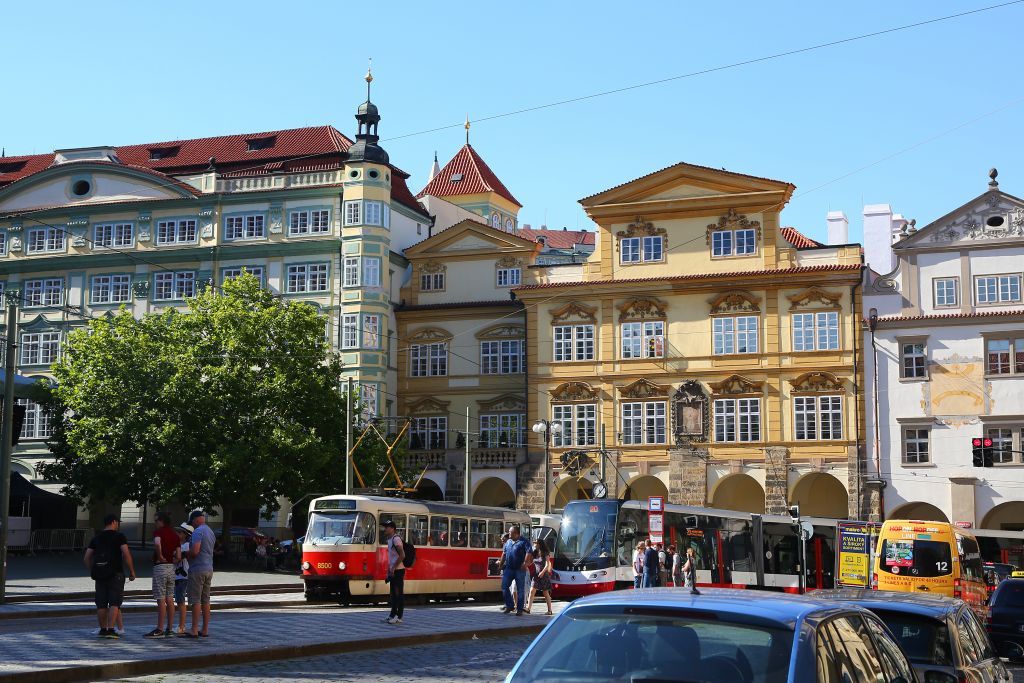
Car Purchase
There also was an exciting event while we were staying in Prague. In the future, we were going to travel to other European countries and wanted to do it in comfort. Therefore, we decided to buy our own car so we don’t have to take the train anymore.
We wanted to buy a car in Berlin. However, we had to go to Germany several times – there, we considered different car models before choosing the one that satisfied all of us. Both we and our guys were happy with the purchase.
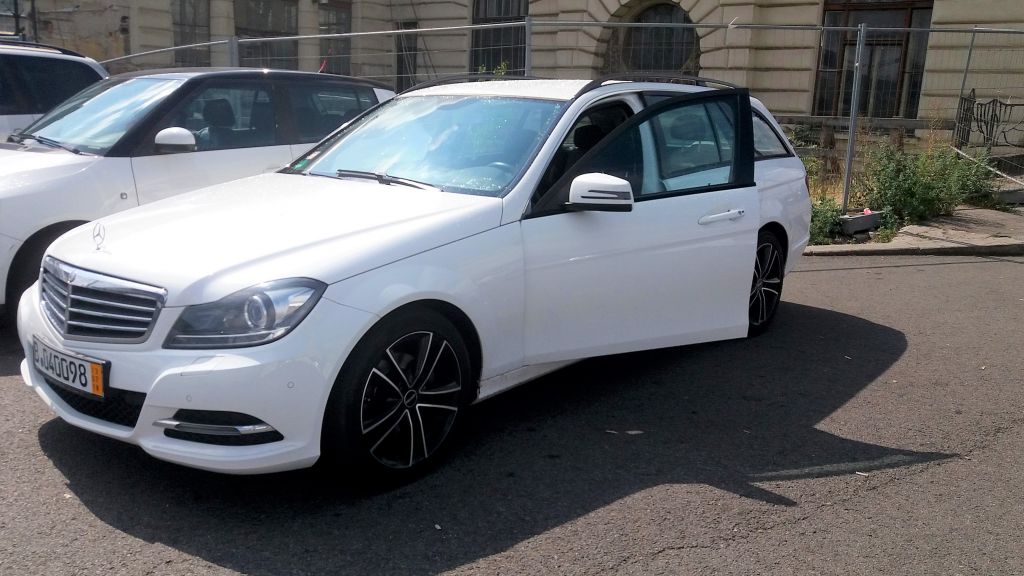
Parking Peculiarities
After purchasing the car, we found out that Prague has very unusual parking regulations. The point is that the rates of paid parking are different for all residents of the city. If you park a car in your area of residence, you pay reduced parking rates. But if you decide to leave your car in another district, you need to fork out – a couple of hours would cost an owner several dollars.
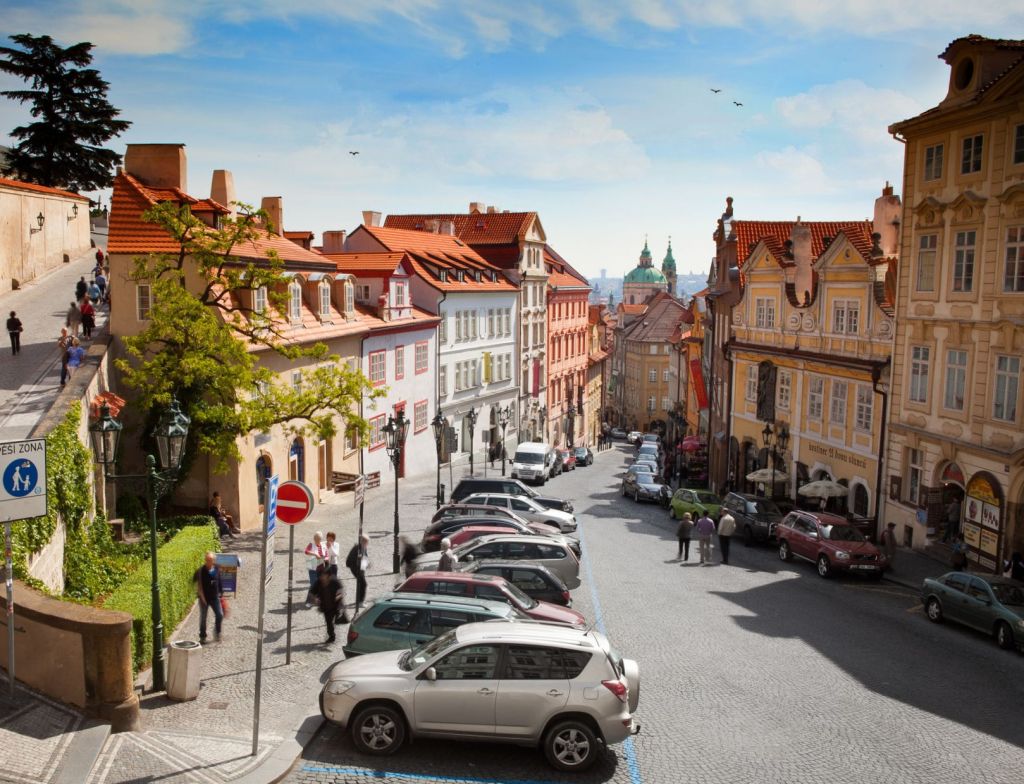
By good fortune, we were lucky to find a street with free parking close to our home, so we could park our new car for free every day.
Playgrounds
Of course, our boys could not do without playgrounds. There are not as many of them here as, for example, in Budapest, however, both we and our guys were happy with the ones that Prague offered us.
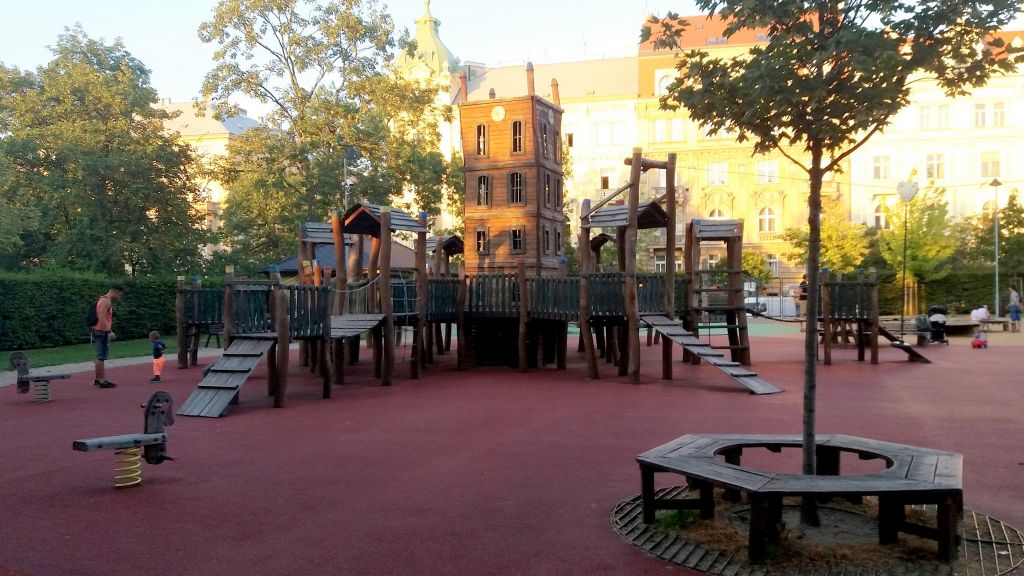
All playgrounds in the city are totally free of charge. Most of them are surrounded by small fences and open until 7 or 8 p.m. As for the diversity, playground equipment here fits every taste – they include slides, swings, small multistory houses, towers.
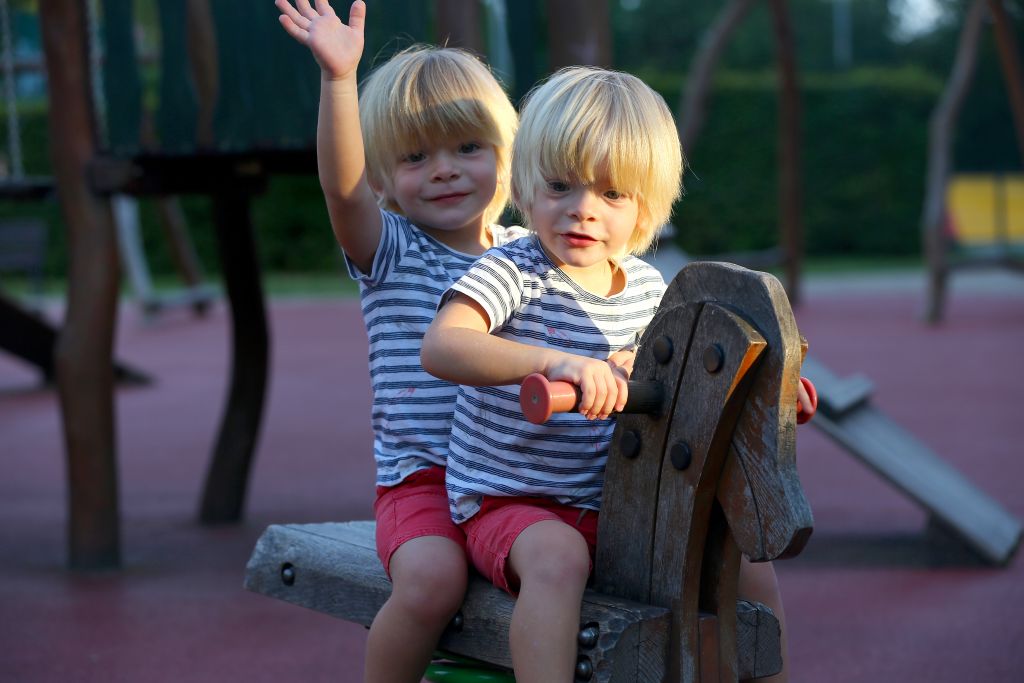
Moreover, almost every playground is equipped with a small free drinking water fountain. Even on the hottest day, our boys could quickly quench their thirst and keep having fun.
Curiously, most of the children’s play areas are located in residential, more peaceful, quarters, and we saw only a few of them in the center.
But one playground impressed us especially. It was equipped with a small house that opens every morning and offers children games of their choice: from crayons, toy cars and balls to paddles and board games. We could spend the whole day with the guys there – and they always had something to do.
Old Town Square
The Prague center is rich in various heritage assets, sights and simply beautiful locations. One of them is Old Town Square, which is surrounded by impressive buildings in such styles as Baroque, Gothic, Renaissance.
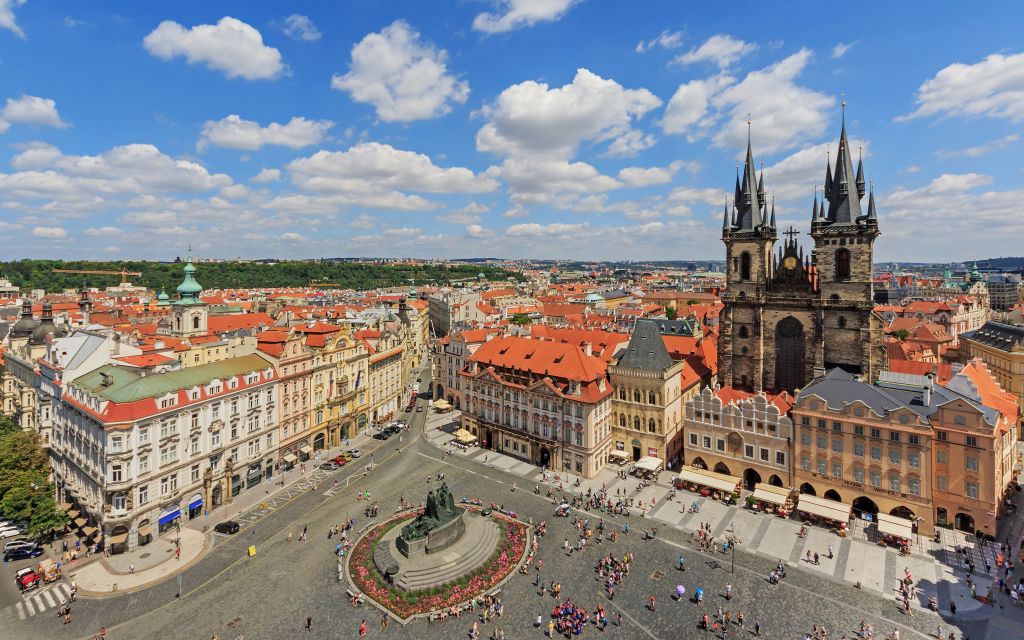
Today, the square attracts thousands of tourists who can relax and have a good time here.
However, the place was not always so peaceful – back in the 12th century, it hosted a lot of executions of rebels. And in 1621, 27 participants in the uprising against the Roman Empire were executed in Old Town Square. This was one of the most spectacular and bloody executions in the entire history of the Czech Republic.
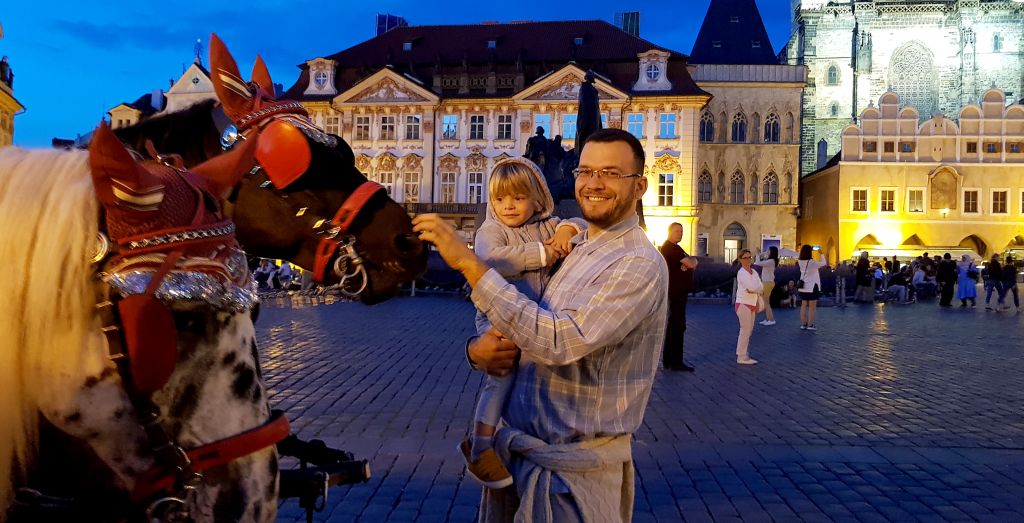
The Jan Hus Memorial
The very center of Old Town Square has the Jan Hus Memorial. Jan Hus was a famous Czech campaigner for the rights and liberties of his people. In his preaching, Hus often criticized trade in indulgences and clerical positions. He considered himself a faithful church minister and dissuaded people from blind faith in the laws of religion.
The government considered this idea a heresy and sentenced the preacher to be burned.
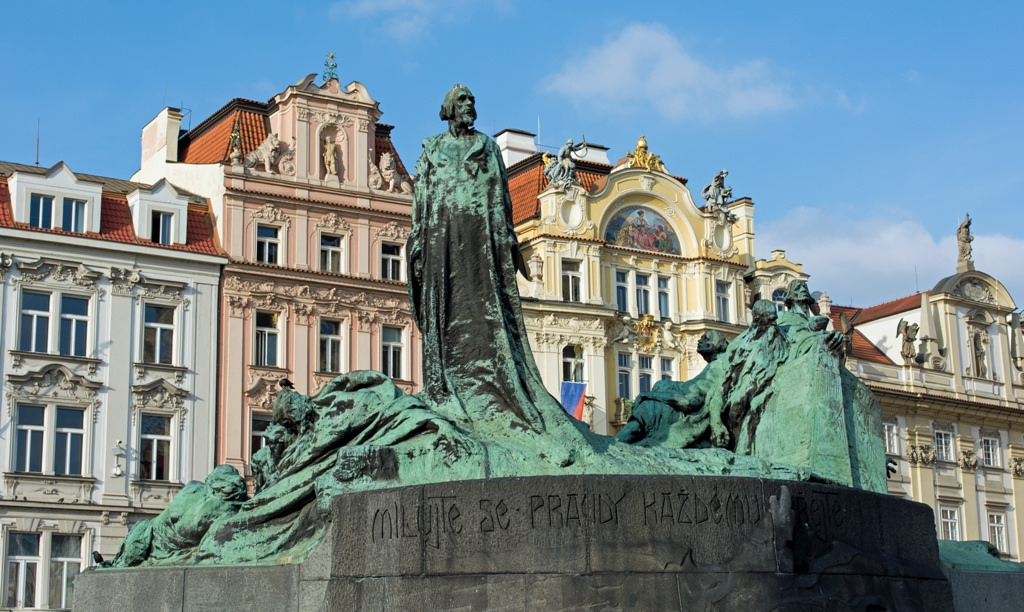
The Jan Hus Memorial was installed in 1915, and the sculptors worked on it for 14 years.
The Old Town Hall
One of the famous buildings of Old Town Square is the Old Town Hall. It is made in the Gothic style, and the highest part reaches 70 meters.
The foundation stone of the construction was laid in the 14th century, and its history is also full of dark periods. For example, criminals sentenced to execution at Old Town Square were kept in this building.
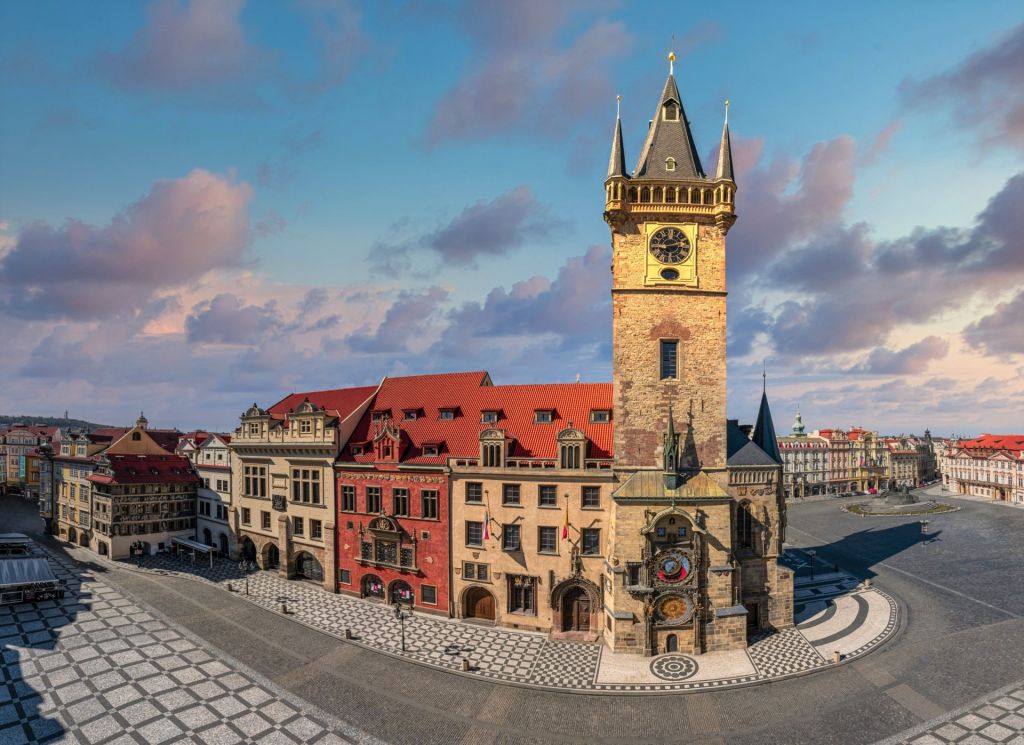
Fortunately, today, there are only positive events at the Old Town Hall. They include various exhibitions, an operating museum, and people even get married here.
The Prague Astronomical Clock
There is another famous thing on the Old Town Hall which is called the Prague Astronomical Clock, or the Orloj.
From Czech, “Orloj” is translated as “clock”. Today they are the third-oldest astronomical clock in the world and the oldest that still operates.
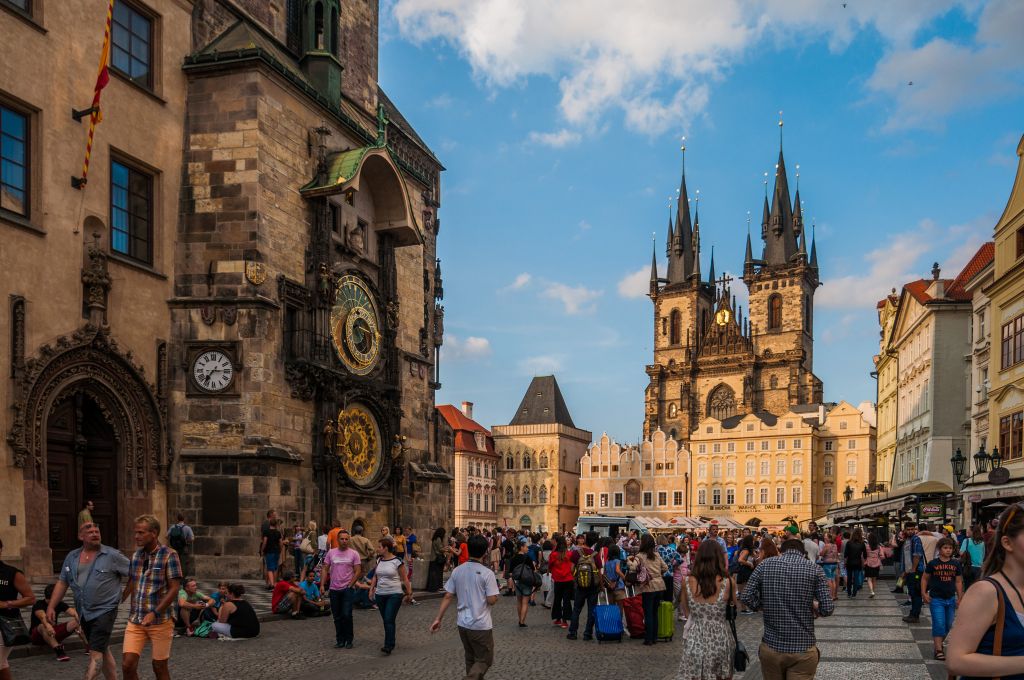
The chimes consist of three main parts: the central dial, the lower dial and two windows with moving figures at the top. The central dial shows several kinds of time at once: stellar time, sunrise and sunset time, moon phases, Central European, Czech, Babylonian and current time.
The lower dial shows 12 sketches of Praguers’ rural life – 12 months. Each image shows the activity typical for a particular month.
Above the two windows at the top, there is a small gilded rooster. The Praguers believed that, with the first rooster’s crow, all evil spirits that have power at night leave the city.
The Prague State Opera
A few blocks from Old Town Square, there is a national monument, the Prague State Opera building. Funds for its construction were raised among both ordinary people and the authorities. The construction itself started in 1868 and was almost treated as a national holiday.
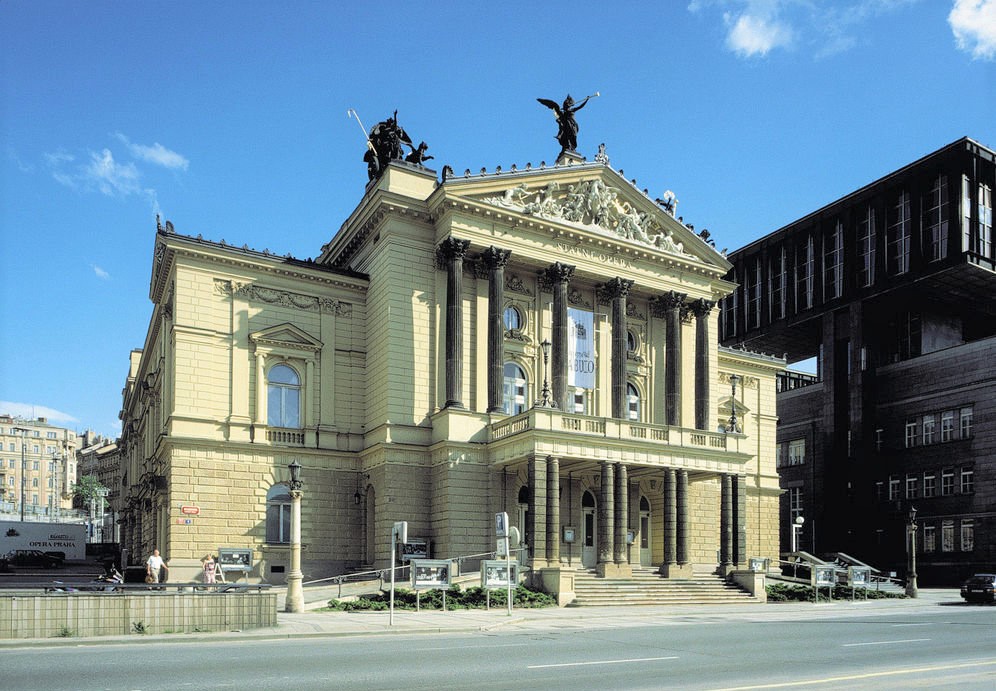
The Prague State Opera became a symbol of the Czech national identity. In the 19th century, all theatrical performances were available in German only, but the Czechs also wanted to attend events in their native language. This is how the idea of constructing one of the most famous Czech theaters came up.
The appearance of the building has hardly changed throughout its history. Today, people come here not only to listen to opera shows. They also watch ballet and simply enjoy the stucco decorations and interior dressing – their beauty truly fascinated us.
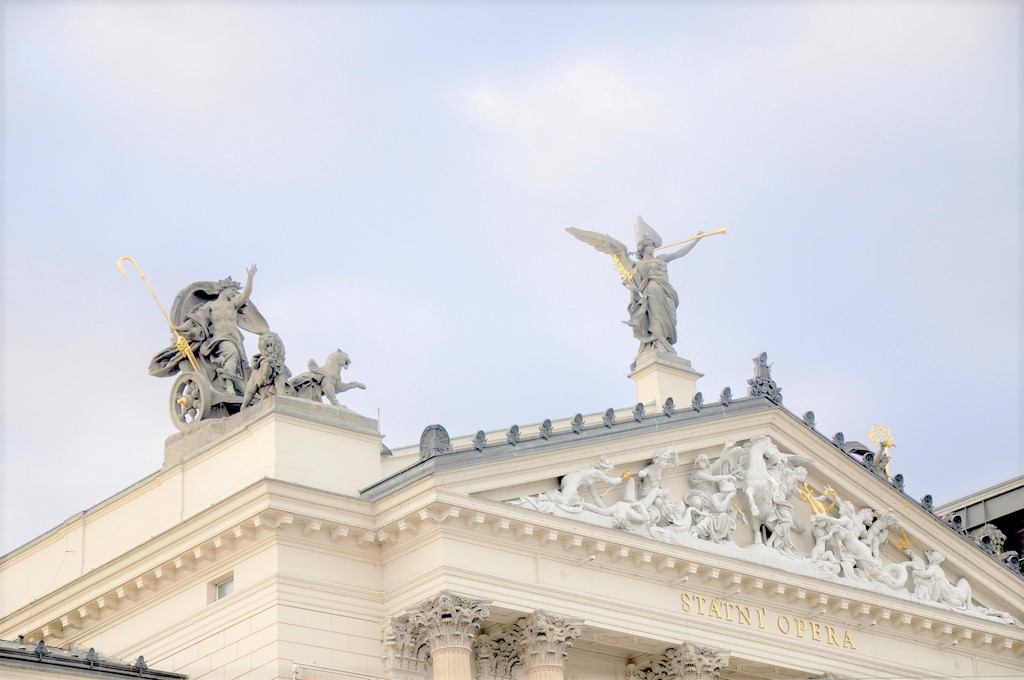
Parizska Street
In addition to architecture, we also admired the streets in Prague – many of them are justly considered the city’s landmarks.
One of the popular tourist streets for walking is Parizska Street. The stylish faces of the buildings are complemented by lines of well-kept green trees – in the light of the summer sun, this landscape looks especially exciting.
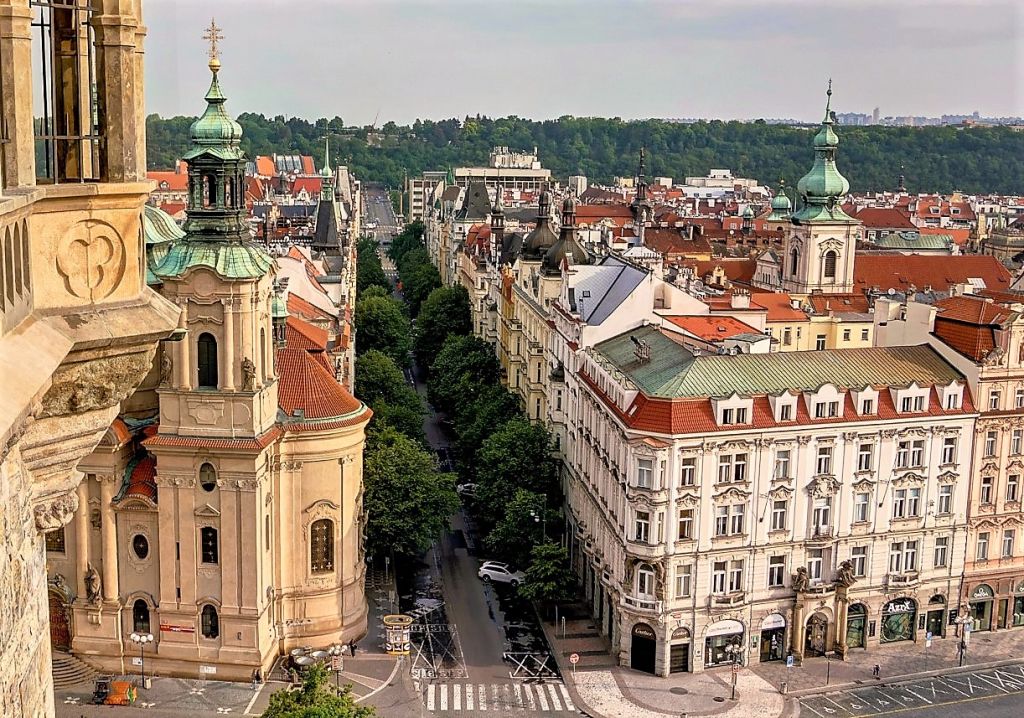
Moreover, Parizska Street is the most expensive street in Prague. Instead of the usual stores and small restaurants, it is full of stylish boutiques of fashion clothes.
It is hard to believe, but a hundred years ago, the street looked more like slums where the poor and the homeless took shelter. It was difficult to live in this area because citizens often died from diseases and fires.
Wanting to change the situation, the Prague authorities decided to take groundbreaking measures – they lengthened the street, demolished about 600 houses in the way and built new buildings in the Art Nouveau style.
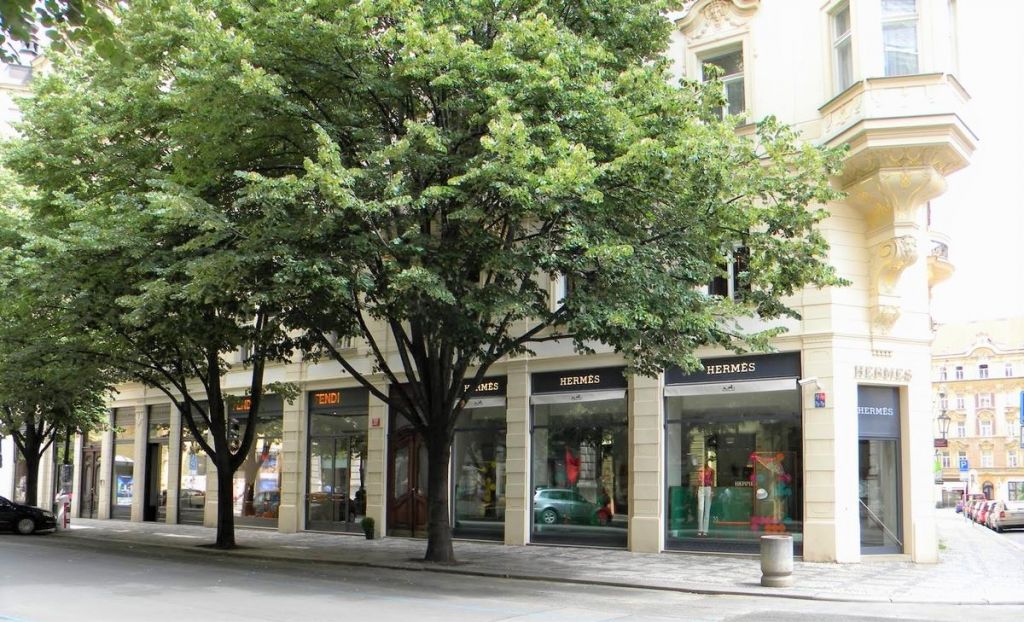
The Narrowest Street in the City
Another exciting – and even surprising – street is located on the opposite side of the river. Vinárna Čertovka is a star of the city. It is the narrowest street in Prague: its length is 10 meters and its width is only 70 cm!
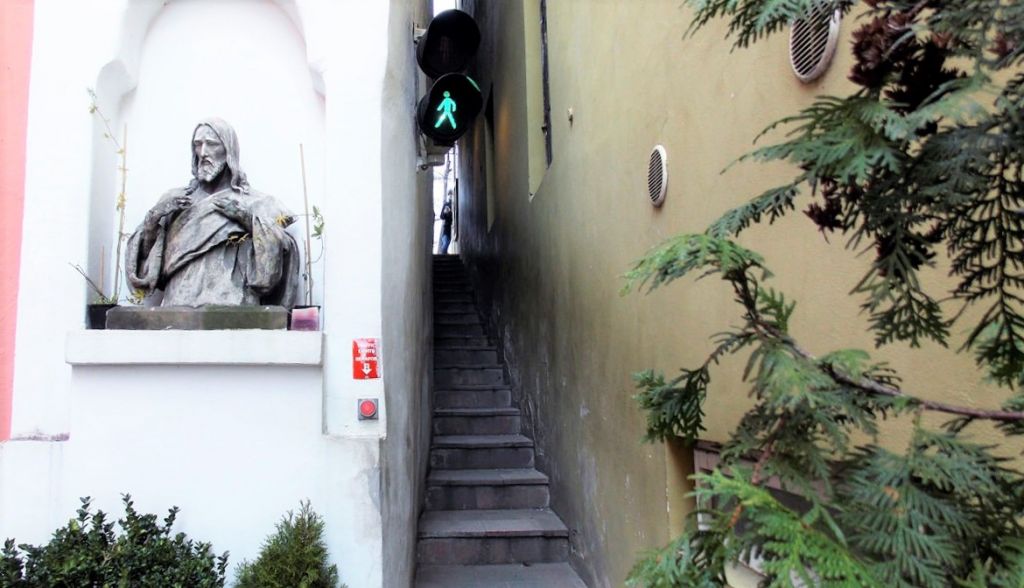
It is almost impossible for two people to walk along it. That is why there is a pedestrian traffic light next to it: you need to press the button before you start walking along the street.
The Dancing House
Among the similar rectangular houses, there is the Dancing House, a highlight of Prague. It is located right near the Vltava embankment and is justly called one of the most unusual buildings not only in Europe but also in the world.
The house consists of two structures – straight and curved, made in the deconstructivism style. These buildings visually remind of a dancing couple: the straight tower plays a role of a man, and the other one is a prototype girl with an hourglass waist in a fluttering dress.
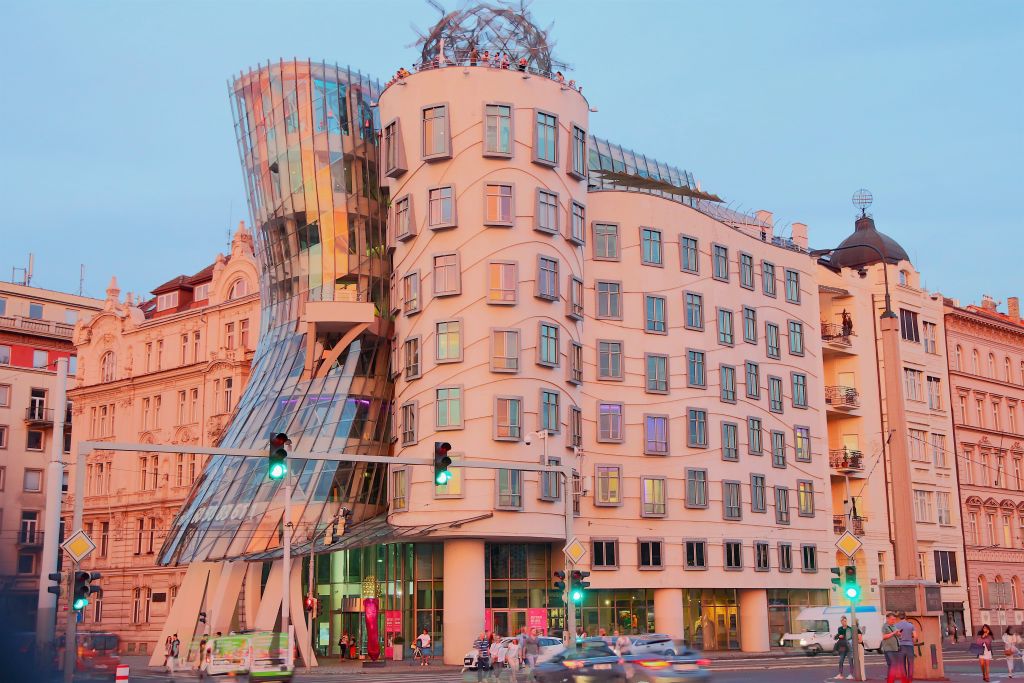
The Dancing House was built 28 years ago and initially did not evoke the expected enthusiasm among the townspeople. They even called it the “scar of the city” which did violence to its historical and unique look.
Over time, however, they changed their minds when tourists began to take an interest in the building.
At night, the Dancing House shines out among the rest of the buildings: until the very morning, it sparkles with lights of various colors. That flickering makes it look alive.
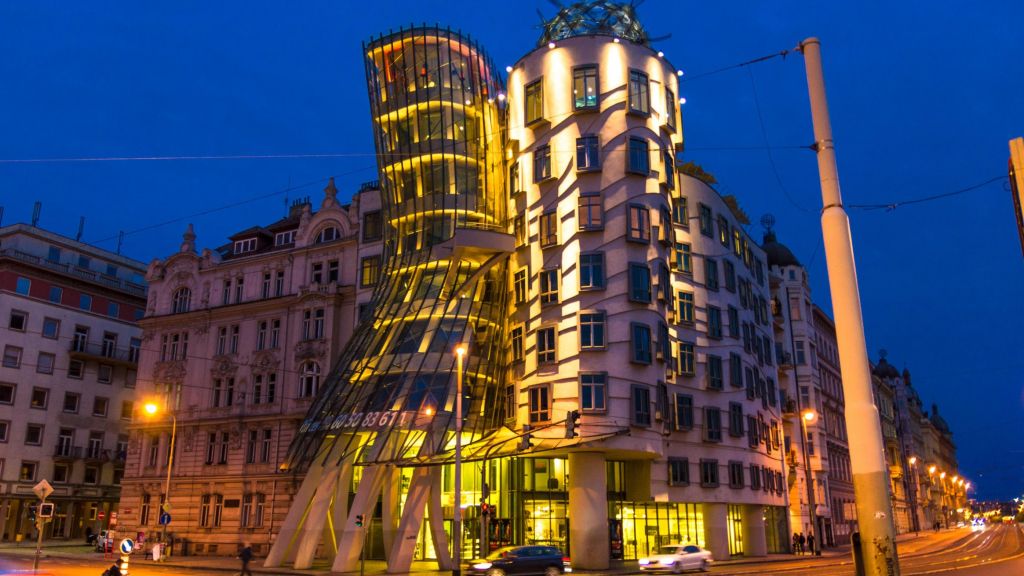
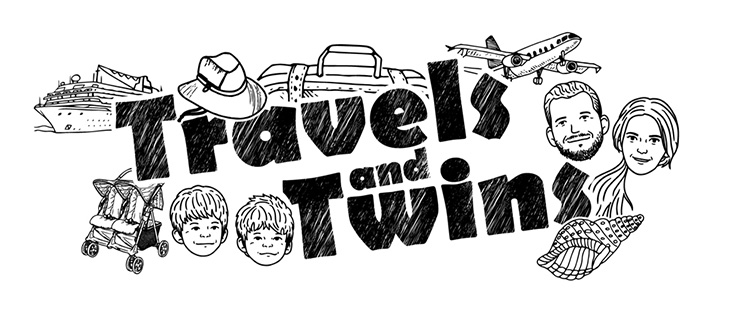
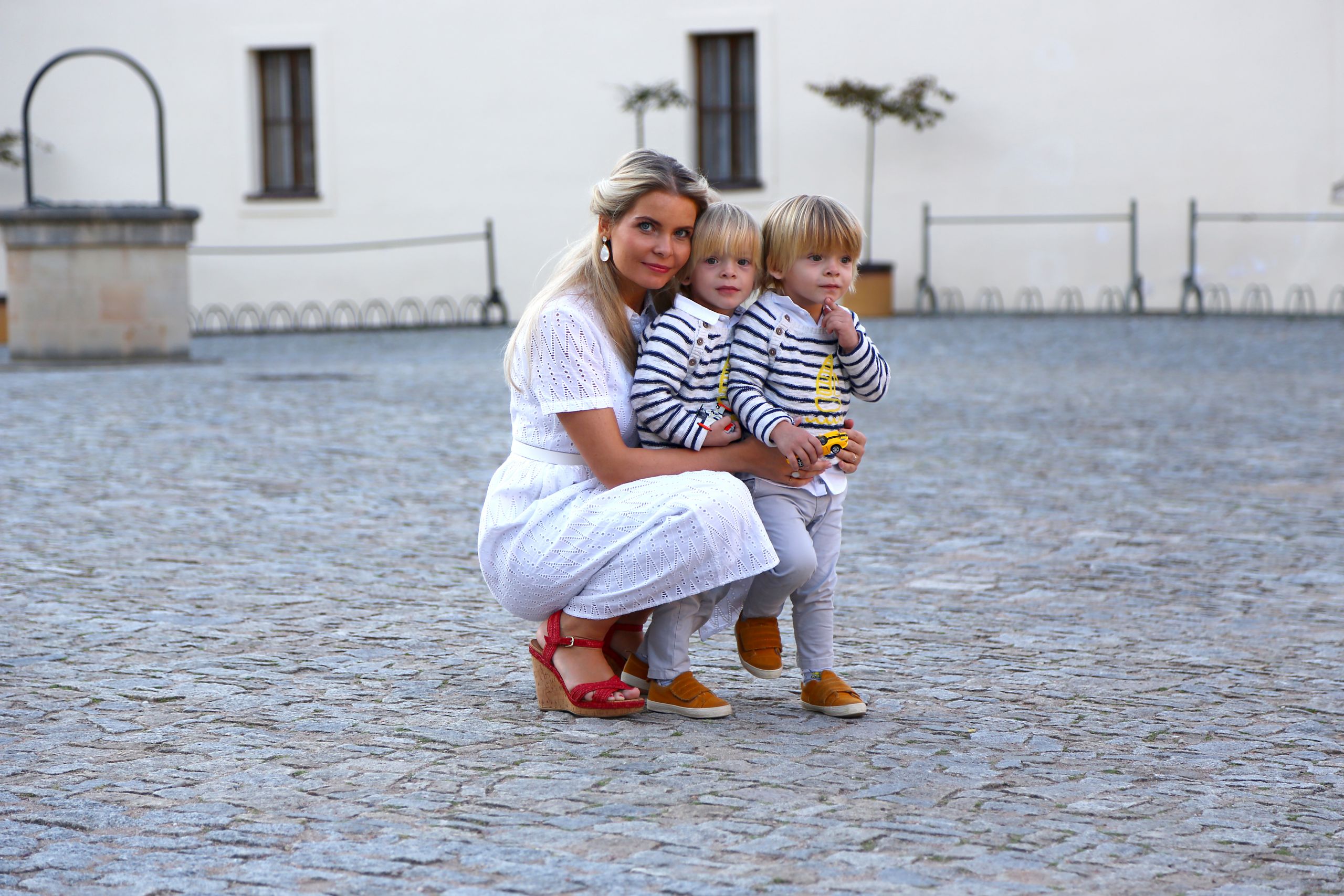
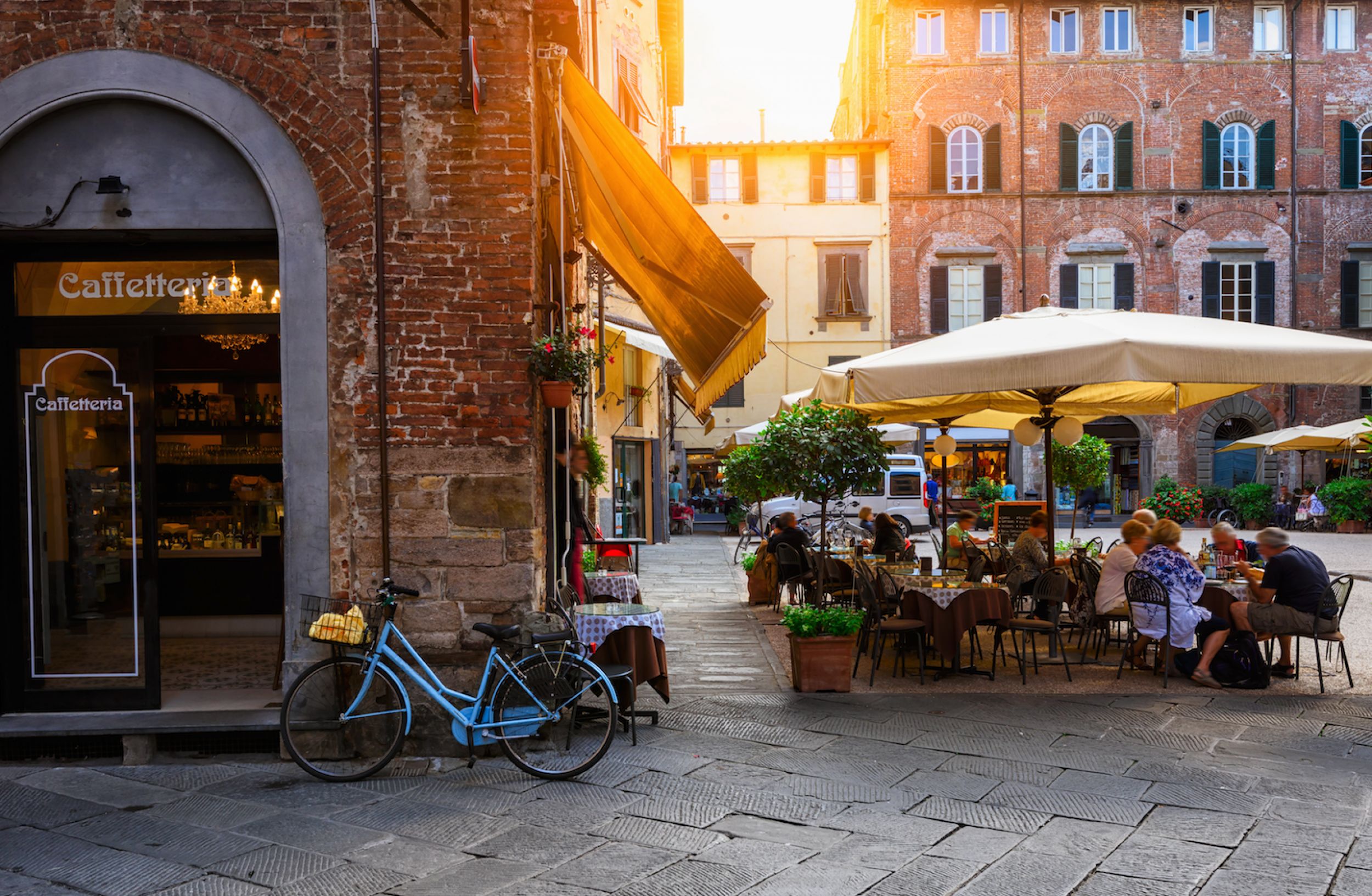
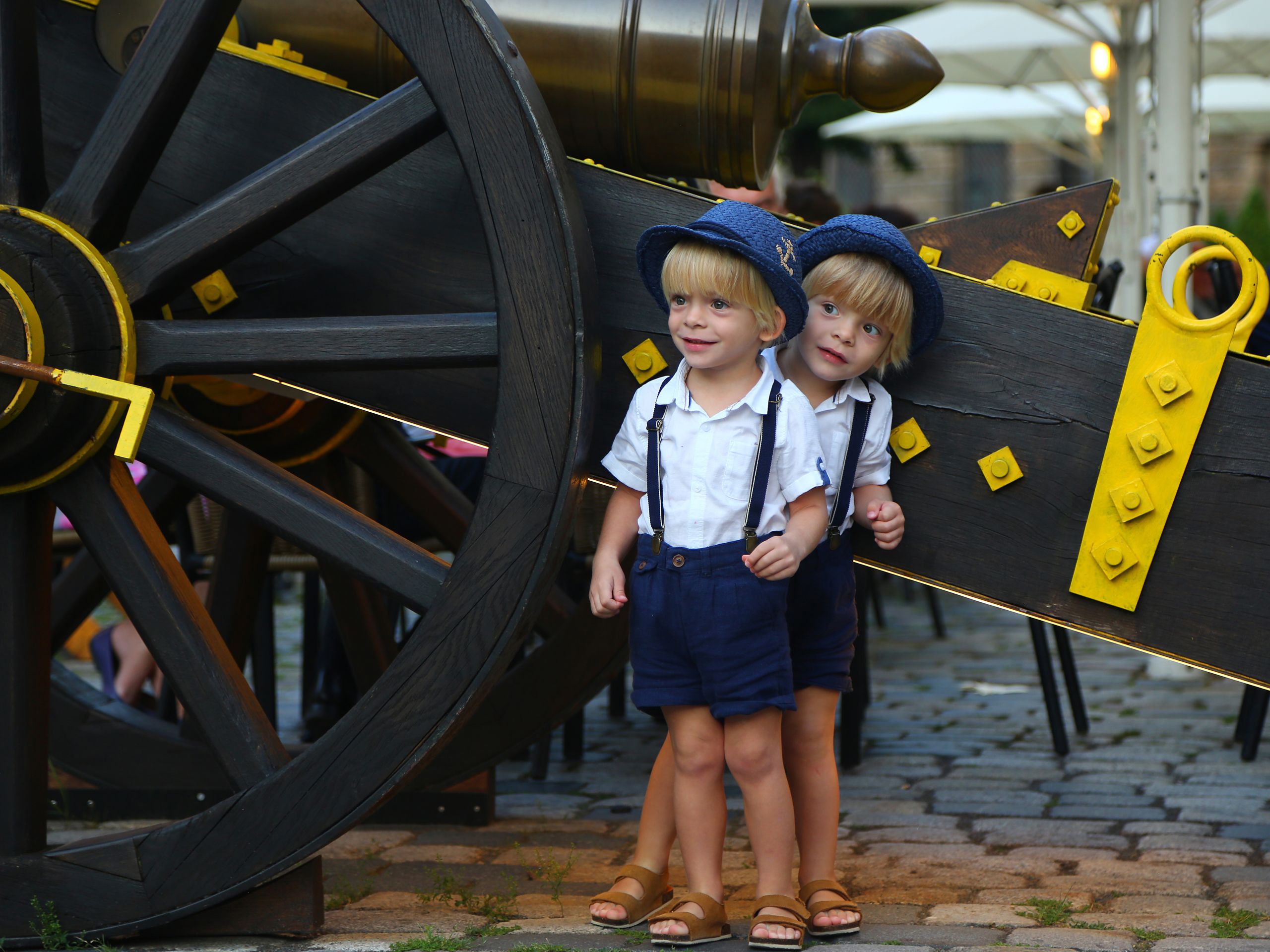
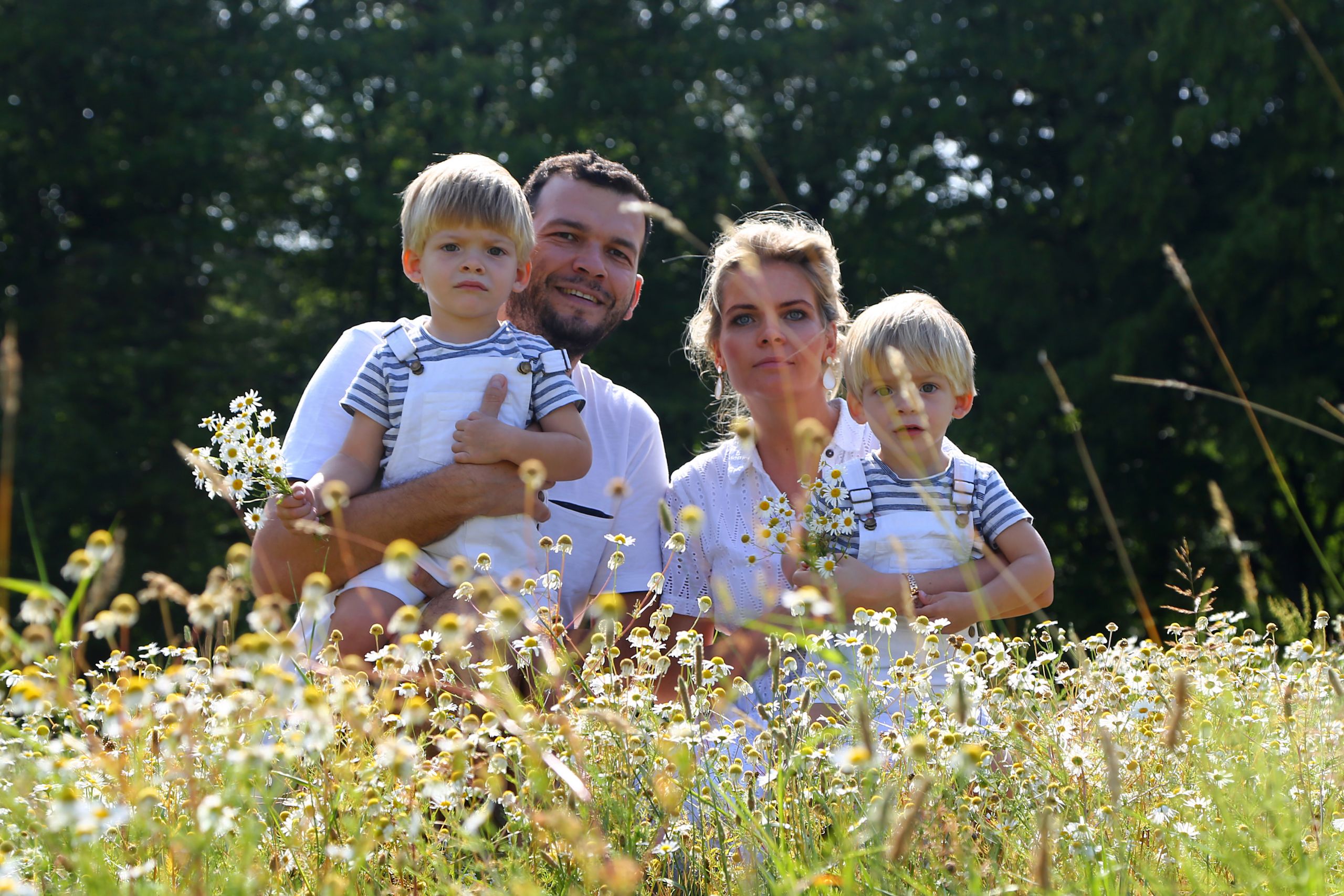
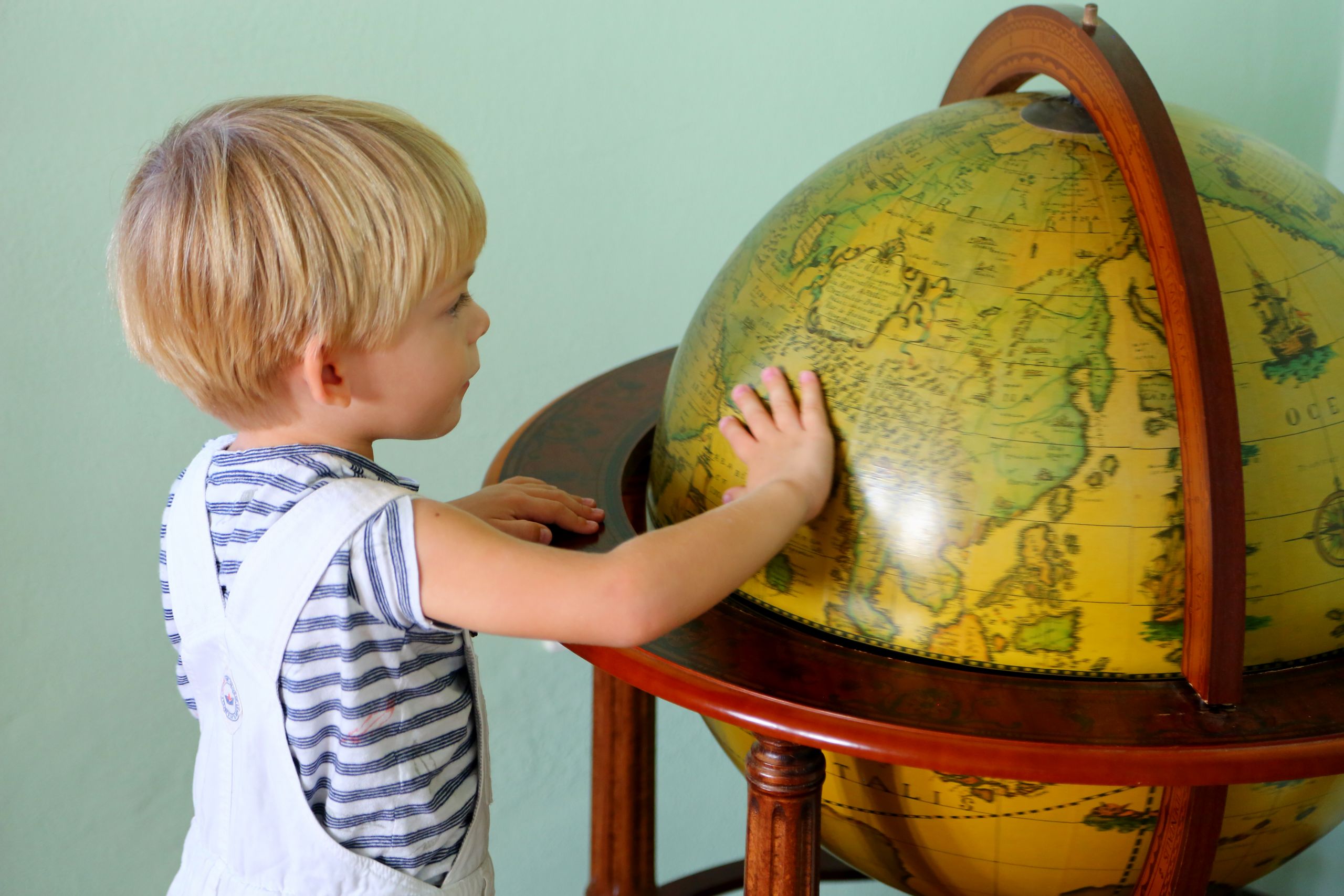
Leave A Comment